Brand Awareness Strategy [The Ultimate Guide for 2026]
Table of contents
When you see a bitten apple, a simple checkmark, or a colorful ‘G,’ you instantly think of Apple, Nike, and Google. That instant recognition is the power of brand awareness. Want to make sure your brand leaves a lasting impression, too? You’re about to discover how.
- Brand awareness describes the extent to which consumers recognize and remember a brand, including its products, logo, and values. It is a key marketing element, helping companies build customer loyalty and stand out in a competitive market.
- Brand awareness building is a strategic process of creating a unique brand image and exposing it to the target audience using various marketing, communication, and visibility tactics (content, social media, advertising, PR, and education).
- The indispensable element of a brand awareness strategy is measuring your brand recognition, associations, and the effects of your actions intended to strengthen them.
In this article, we’ll explore nine effective strategies to build your brand’s presence and ensure it stands out in today’s competitive market.
What is brand awareness? Definition
Brand awareness is the extent to which customers recognize and recall a brand, including its name, logo, products, and other identity elements.
It is a critical first stage of the marketing funnel because consumers must be familiar with a brand before they can consider purchasing from it.
Awareness exists on a spectrum ranging from complete unfamiliarity to a high level of brand recall and recognition. The higher brand awareness increases the likelihood that people will trust a brand and choose its products over competitors’.
In a nuthsell: brand awareness = how well people recognize and remember your brand.
7 steps to a strong brand awareness strategy
A complete brand awareness strategy requires a holistic approach.
It starts with defining your brand identity and audience, and continues with intentional marketing tactics that put your brand in front of the right people.
Those key tactics include content marketing, social media, PR, advertising, education, event presence, and continuous brand awareness measurement.
Ready to dive in? Awesome! So, let’s go!
01 Create a consistent brand identity
Brand identity is the set of elements a brand uses to present itself, differentiate itself from others, and shape how the public perceives it.
In short, brand identity answers what and why the company wants to be in the eyes of others.
It’s essential for your brand awareness strategy as brand identity represents your brand, builds recognition, and sticks in heads.
In practice, brand identity includes:
Visuals:
- Logo – your unique graphic mark that represents the brand
- Color palette – the specific colors that you use consistently across all brand and marketing materials
- Typography – the chosen font or fonts and how they are used
- Style of graphic elements – the overall design style you use, including icons, shapes, illustrations, and infographics
Brand message:
- Brand name – the core name of the company or product
- Brand story – a unique, captivating background of founding and developing your brand
- Brand voice and tone of voice – your brand personality and style of communication
- Taglines and slogans – catchy, memorable phrases that capture your brand’s essence and build quick associations
Strategic:
- Brand values – the core beliefs and principles that guide your brand’s actions and decisions
- Positioning – a clear explanation of how your brand is different from competitors and why it matters to your target audience
- Unique value proposition (UVP) – the specific benefit that makes your offer stand out and convinces people to choose you.
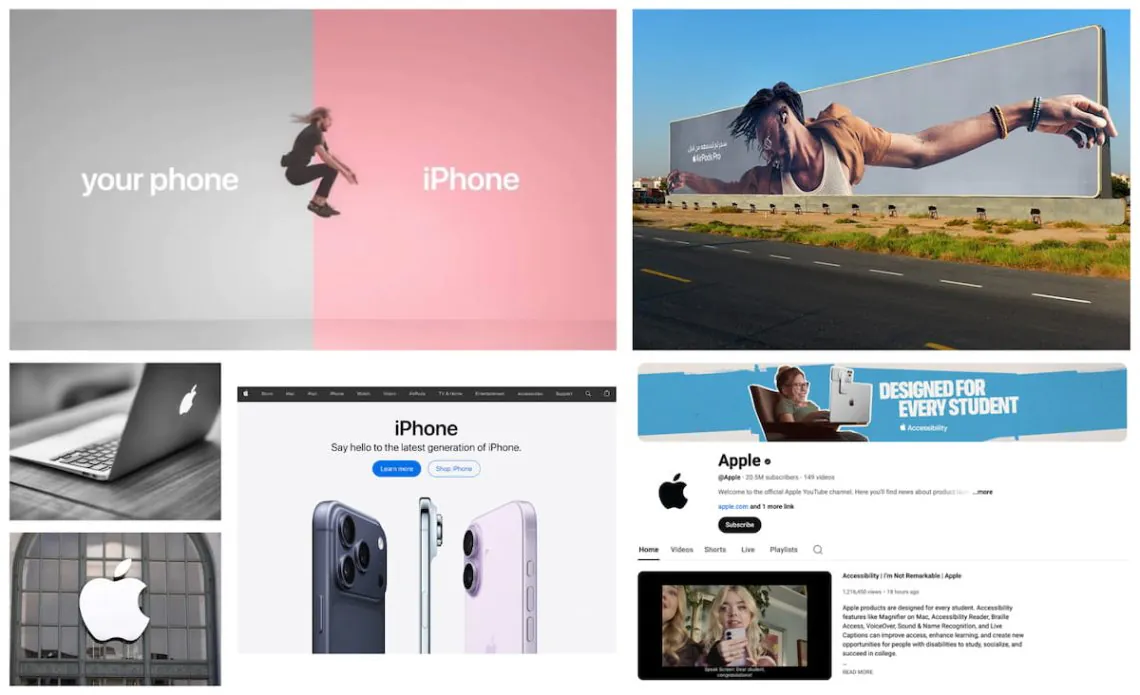
02 Get to know your audience
Understanding your audience is one of the foundations of effective brand awareness building. You can’t create recognition if you don’t know who you want to be recognized by.
The more clearly you understand your target audience’s and potential customers’ needs, expectations, and behaviors, the easier it becomes to discover how to reach them with the right message.
In short, understanding your brand audience is crucial to reach them at the right time, in the right place, and with the right message.
Here are practical tactics you can use to find and understand your target audience:
Use your existing customer data
Your Google Analytics, Google Search Console, CRM, or even a native social media analytics offer a bunch of insights about your audience, such as:
- Demography
- Behavioral trends
- Search queries
- Content and products that customers return to
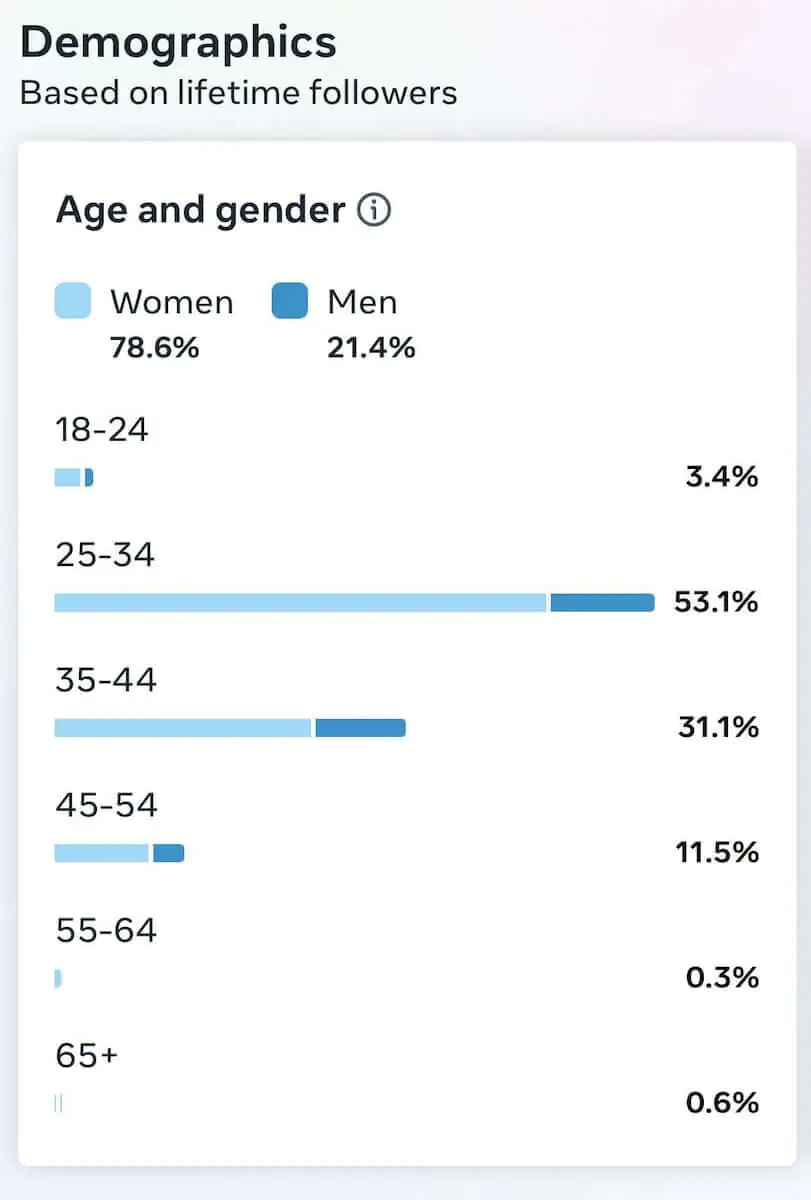
Use social listening
Social listening is a process of tracking and analyzing online conversations about your brand, industry, competitors, and relevant topics across social and non-social media sources.
Social listening tools, so software that automates this process, can draw really interesting insights into:
- What your target audience talks about – so you can understand their needs, problems, and expectations, and tailor your messaging
- Where those conversations happen – so you can focus on platforms that really matter for your brand
- What’s their sentiment towards various aspects of your brand – so you can address negativity and spotlight positive aspects
- Competitor benchmarking – so you can discover the level of your brand recognition in relation to your market rivals
- Demographic details of your target audience – so you can adjust language and messaging
- Which profiles or people shape opinions in your niche – so you can identify potential partners who can help you get more brand exposure
03 Amplify content marketing
When discussing brand awareness tactics, we shouldn’t forget content creation.
According to the Content Marketing Institute, 87% of B2B marketers improved brand awareness with creating captivating content. No surprise at all!
Content marketing builds trust and expertise by providing trustworthy information people search for, positions the brand as a thought leader, and increases brand visibility through organic traffic and social search.
In short, creating content that solves real problems attracts and engages new audiences, making them more familiar with your brand and strengthening loyalty.
Here are the elements to consider to maximize your content marketing impact on brand awareness:
Content mix
Content mix refers to using a combination of multiple content formats, such as blog posts, videos, podcasts, email newsletters, webinars, and social media posts, to attract and engage a target audience.
In the constantly changing digital landscape and content consumption preferences, using various types of content is crucial to reach beyond your current audience.
SEO
Search Engine Optimization plays a crucial role in your brand discovery.
The more often people see your brand in search engine result pages (SERPs), the higher the chance they’ll remember and recognize your brand.
GEO
Next to SEO, think about GEO – which stands for Generative Engine Optimization, so optimizing your content for AI-driven search tools such as ChatGPT, Gemini, and Perplexity.
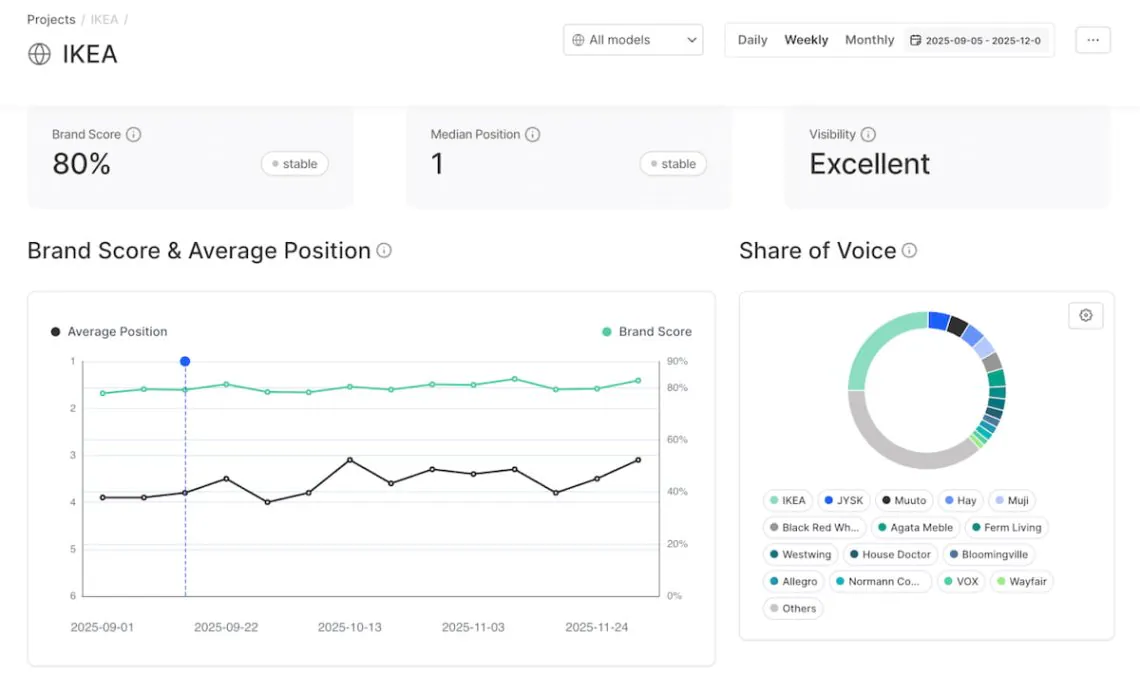
In the rapidly changing landscape of search behavior and the rising importance of AI brand visibility, it’s becoming essential to structure your content so AI models can easily interpret and cite it.
For practical tips, I strongly encourage you to read Chatbeat’s comprehensive guide on how to win brand visibility in AI models and AI search.
High-engagement educational content
Creating educational content is one of the most effective tactics to increase brand awareness.
According to Conductor’s research, educational content can increase brand trust by 9% within a single week!
No wonder. Teaching people demonstrates your expertise, builds credibility, attracts new customers, and positions your brand as a thought leader in the industry.
While blog posts and guides can benefit you, more in-depth educational formats, such as courses, webinars, live sessions, and workshops, can skyrocket your brand visibility.
They require more time and attention from your audience, which makes them especially powerful for strengthening brand recall.
The top high-engagement educational formats are:
| Format | Effort to prepare | Audience engagement | Brand awareness impact |
| Live sessions | ★★☆☆☆ | Medium – real-time interaction but short attention span | ★★★☆☆ |
| Webinars | ★★★☆☆ | Medium/high – real-time interaction, Q&A | ★★★★☆ |
| Workshops | ★★★★☆ | High – active participation and problem-solving | ★★★★★ |
| Courses | ★★★★★ | High/very high – multi-hour or multi-day contact with a brand | ★★★★★ |
As a whole, content marketing is an interconnected system:
- Content mix multiplies the number of sources, which improves your discoverability in search engines and generative AI tools.
- Educational content demonstrates expertise, an element of Google’s core E-E-A-T ranking factor, which boosts your brand visibility on niche-specific queries.
- Ultimately, these tactics work together to strengthen your brand awareness, making your brand easier to recognize, recall, and trust.
04 Use social media wisely
While social media activity is a form of content marketing, it’s such an important and huge topic that it deserves to be a separate brand awareness tactic.
According to Statista, the average user spends 2 hours 21 minutes daily on social media. That’s a massive opportunity to get noticed and – right! – build up your brand awareness.
In short, social media builds brand awareness by increasing visibility, engaging with customers, and reaching new audiences through quality content, paid ads, and influencer partnerships.
Here is what you should remember to optimize your social media efforts and boost brand awareness:
Choose the right social media platform
The great thing about social media is that they give you a well-functioning platform to broadcast your message. All you have to do is send the right message to the right people at the right time.
And on the right platform.
The right platform for your business is where your customers are active. Look, you don’t have to spend time figuring out Instagram Stories if no one is watching them.
To avoid guessing and burning budget, you can discover which social media platforms will be the best fit for you using social listening tools like Brand24.
With its AI Metrics Analysis, you can easily find out which platform generates the most social mentions of your brand and which channel is the most reach-efficient.
This way, you can optimize your social media marketing campaigns.
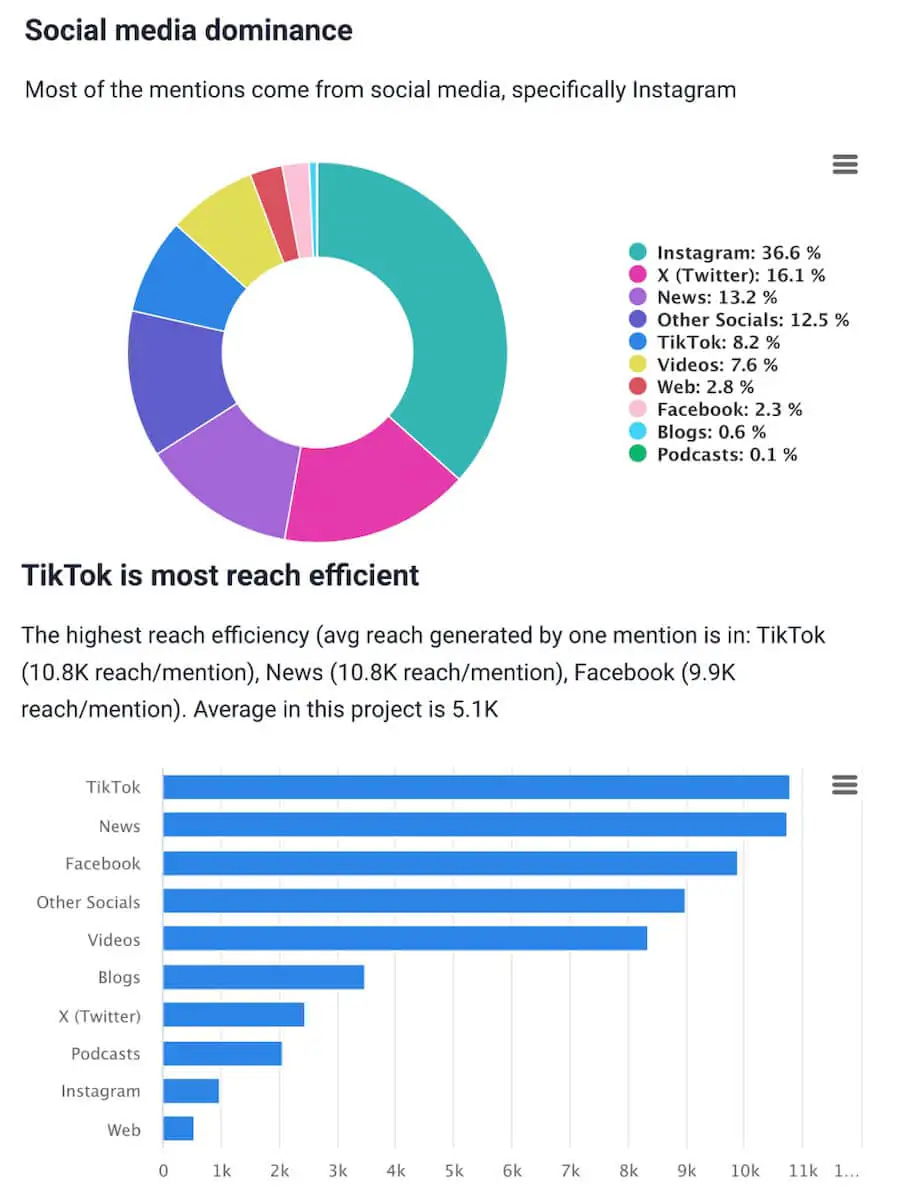
Post good, consistent & high-quality content
Telling that social media are full of content is an understatement, to say the least.
According to stats dug by Bernard Marr & Co., every minute (!) users watch over 4 million YouTube videos, send nearly 500,000 tweets on X (Twitter), and post about 50,000 photos on Instagram.
In such an oversaturated environment, only the best content can make your brand stand out and get noticed.
Good social media content is:
- Relevant – speaks directly to your specific audience
- Clear – delivers the message quickly and simply
- Visually appealing – uses high-quality and well-thought-out design
- Consistent – with your brand voice and style
- Valuable – educates, inspires, entertains, or solves a real problem
- Authentic – feels human, real, and builds a connection between your audience and brand
💡 Pro tip
Creating a lot of high-quality content can be quite an overwhelming task. User-Generated Content (UGC) can help you with that! Just remember to ask the author for permission to repost their work.
Plus, when you come across a huge fan of your brand, this can be a great influencer marketing opportunity.
Influencer partnerships
Influencer collaboration is one of the most effective tactics to increase brand visibility. It can do wonders for your brand recognition and awareness because a good partnership can:
- Expand your brand reach by exposing it to a wider and more specific audience
- Enhance your credibility and trust, because influencers are often seen as experts or trusted voices
According to a Marketing Dive study, 69% of consumers trust influencers more than any information coming directly from a brand.
- Increase engagement with your brand, especially when influencers create captivating content that sparks conversations and encourages users to participate.
And what should characterize an influencer to truly boost your brand awareness?
According to the Journal of Marketing & Social Research, the most effective influencers are those who combine:
- Authenticity – they’re transparent with their audience
- Narrative creativity – they’re skilled at storytelling and visuals
- Ethical alignment – they share your brand values
- Interaction personalization – they engage with their audience (not just post things)
- Platform fit – they’re active on social platforms where your audience naturally spends time
If the influencer possesses all those traits, there’s a high chance that they’ll naturally transfer the trust to the brands they promote.
One of my real-life friends, a lifestyle & travel influencer with +137,000 loyal followers, was about to visit Oman. That’s the country I know well, have friends there, and organize trips to.
We made a deal that, in exchange for mentioning my brand on her Stories, I’ll organize a 3-day adventure for her, including a 4WD car with a driver, full accommodation, food, and exciting activities such as desert off-roading, canyoning, rock climbing, and snorkeling.
Long story short, in just two months, this partnership resulted in a +495% increase in my brand’s Instagram followers, a +320 % increase in website visits, and seven sign-ups for my trips.
Engage with your audience
Engaging with your audience is one of the simplest but powerful ways to strengthen brand awareness.
Social media isn’t a one-way broadcast channel – it’s a conversation.
When you reply to comments, answer questions, react to user content, and join relevant discussions, you show your audience that there are real people behind the brand.
In practice:
- Respond to comments quickly
- React to mentions (tagged and untagged)
- Join discussions in your niche
- Ask questions, run polls, encourage opinions
💡 Pro tip
With a tool like Brand24, you can track every mention of your brand – both tagged and untagged.
This allows you to join conversations you would have otherwise missed, respond faster, and turn mentions into meaningful touchpoints that boost your brand awareness.
05 Boost your visibility with PR
Public relations can significantly strengthen your brand awareness by building credibility and expertise, shaping public perception, and boosting visibility through media coverage.
It’s a long-term game of recognition through various tactics, including media relations, content creation, and thought leadership.
In short, PR expands your brand awareness by earning exposure in relevant outlets, securing quotations, and showcasing expertise.
Here is how you can use PR for brand awareness in practice:
Build authentic relationships with journalists
Connect with media outlets and influential journalists within your niche to boost your press coverage through targeted press releases and networking.
Remember that building long-term relationships founded on trust makes journalists far more likely to work with you rather than reaching out only when you “need coverage”.
Create quotable content
Listicles, ebooks, reports, and studies can be valuable elements of your digital PR strategy. They boost your visibility and increase quotations that are invaluable for your SEO and GEO efforts.
Creating such data-driven or insight-powered assets positions your brand as an authoritative source that journalists and creators are more likely to reference.

Encourage and support your employees to build their personal brands
Public relations efforts don’t have to be handled exclusively through a communications team or PR agency.
Your expert employees can showcase their knowledge, share insights, and become powerful voices within your industry.
When more people from the organization speak publicly – whether on LinkedIn, in interviews, at conferences, or through thought-leadership articles – your brand’s visibility naturally grows.
Be an active part of a community
Join relevant groups, contribute to Reddit discussions, and offer real value without promoting your agenda every single time.
Communities, like forums, social media groups, Slack channels, or offline professional circles, reward brands that show up consistently, listen first, and help solve problems.
Besides, sponsor events that align with your brand identity, host offline meetups to strengthen relationships with customers or partners, and participate in various professional events to build your thought leadership.
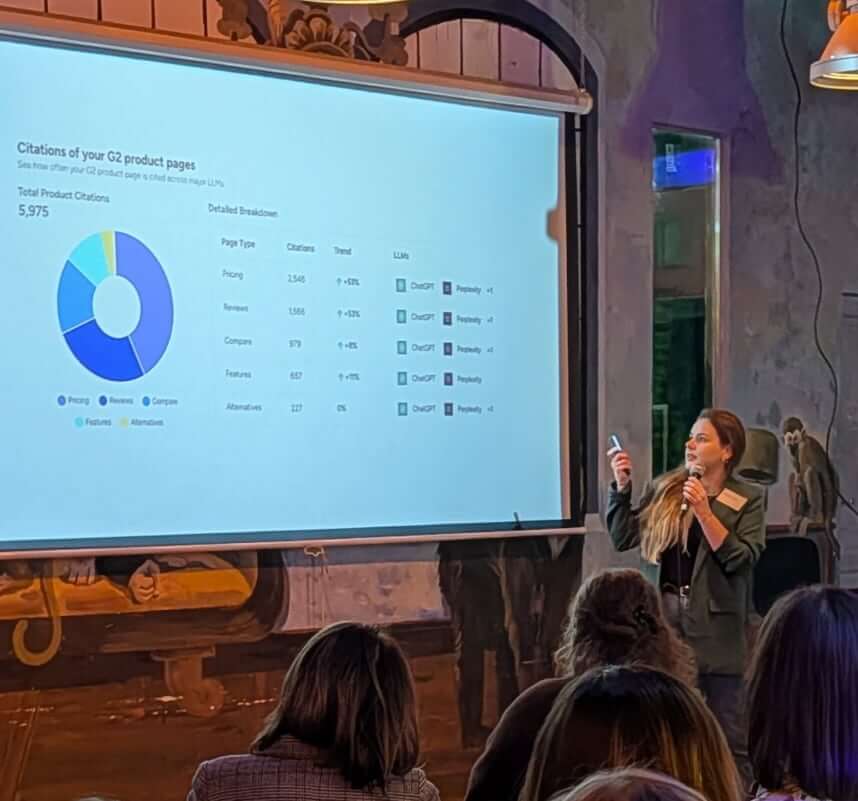
06 Implement paid advertising
Paid advertising is one of the fastest and most reliable ways to increase brand visibility, which is a crucial component of brand awareness.
It’s like adding a spotlight to your brand awareness-building efforts.
Instead of waiting for people to stumble upon your organic content, you put your brand in front of the right audience at the right moment.
In short, while organic marketing builds trust and paid advertising boosts visibility, your brand awareness strategy needs both.
Here’s how to use paid ads effectively to strengthen brand awareness:
Choose awareness-oriented ad formats
Most advertising platforms offer specific formats made for brand recognition and recall. As you aim to boost brand awareness, choose the ones designed for reach and impression volume, not conversions.
Tell the story
Awareness ads are not product demos. They’re not “Buy now” messages.
Instead, they should:
- Present your brand personality
- Show your brand values
- Describe the problem you solve
- Trigger emotions
- Plant a seed for the future
In practice, use short, memorable, visually consistent messages that stick in the audience’s mind after just a few seconds.
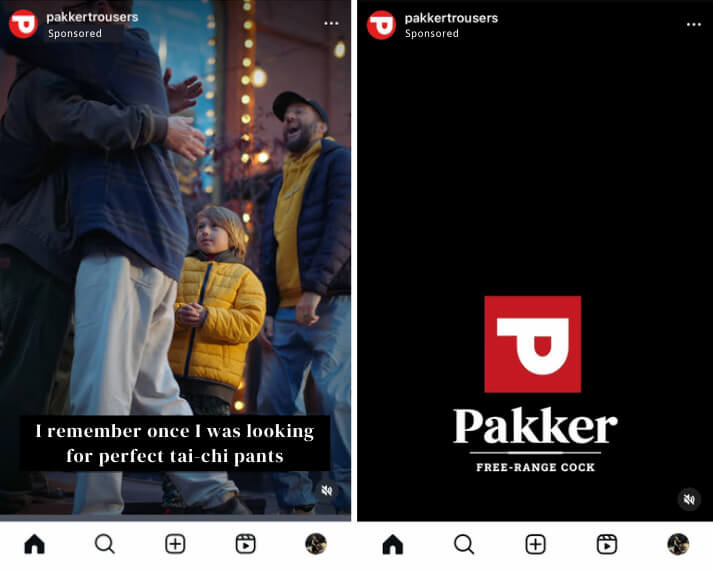
Use retargeting
Retargeting is a tactic of showing personalized ads to users who have interacted with your brand before (i.e., visited your website) but haven’t completed a desired action.
Depending on how you set your brand awareness retargeting campaign, it can:
- Remind visitors about your brand – by showing ads to people who visited your site but didn’t engage
- Reconnect with social media users – by displaying ads to people who engaged with your social media content but didn’t explore further
- Increase familiarity over time – by presenting ads to people who have seen your content elsewhere
07 Measure brand awareness
Measuring brand awareness is tricky. All in all, there is no single and universal scale allowing you to say: “Hey, this month our brand awareness improved to 420!”.
In short, to measure brand awareness, you need a set of signals that, together, paint a realistic picture of how visible, recognizable, and memorable your brand is.
Some signals capture reach, others reflect recall, and others show how people perceive you.
Only when you put them together can you really see whether your brand awareness is growing.
To efficiently track brand awareness, you need to:
Track key brand awareness metrics
Every brand awareness strategy (like content marketing, social media, or PR) comes with its own set of metrics.
Regardless of which strategies you choose, it’s helpful to monitor a few general brand awareness metrics that apply to almost any brand.
These include, for example:
- Brand mentions volume – how often people talk about your brand online
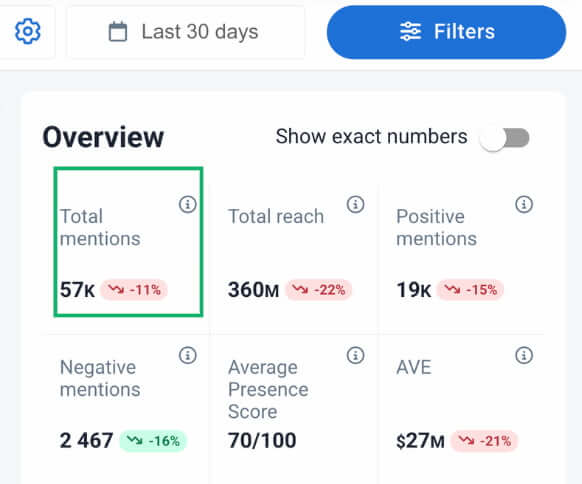
- Brand search volume – how frequently users search for your brand name
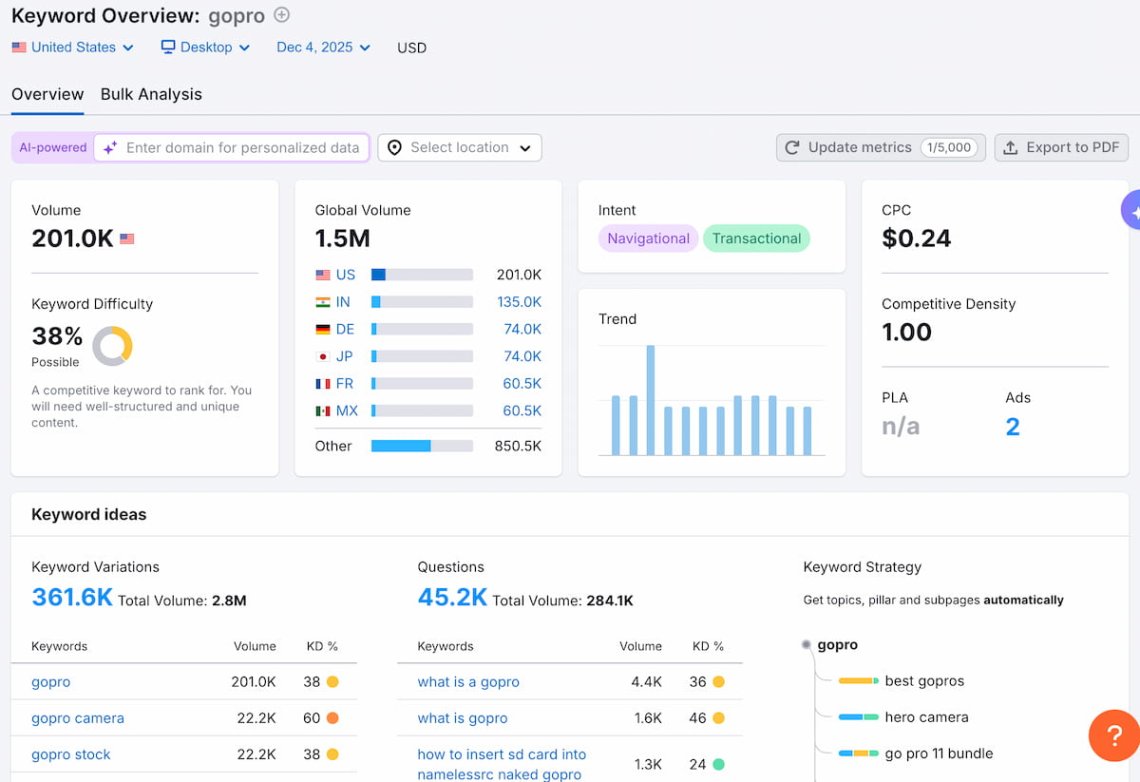
- Presence Score – a native Brand24 metric presenting the online popularity of a brand at a given time on a scale from 0 to 100. Very helpful to get a quick insight into your current brand awareness.
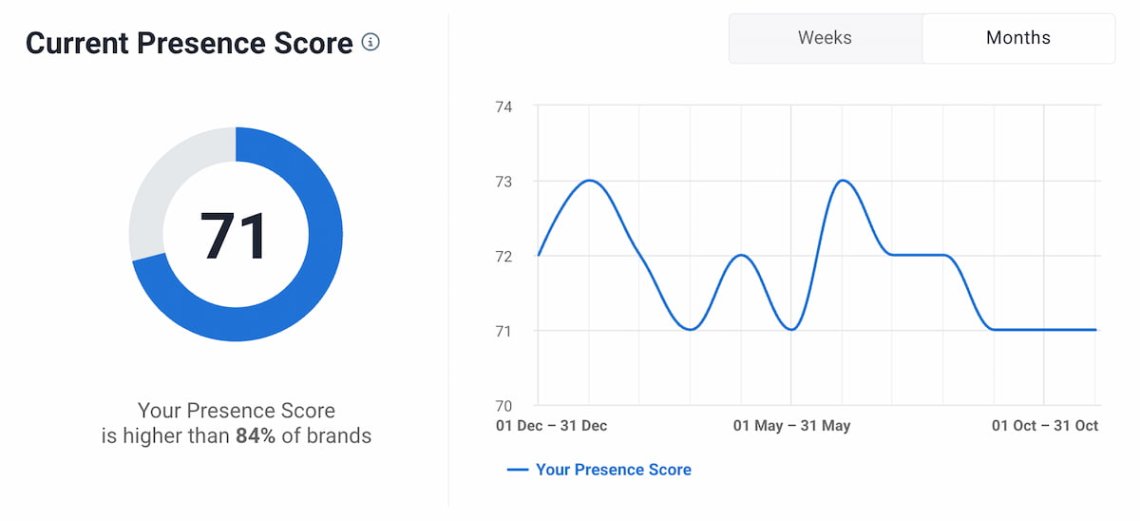
Explore the topic: Key brand awareness metrics you need to measure
Implement tactic-specific metrics
Once you have your general awareness indicators under control, go one level deeper.
Each brand awareness tactic you use requires its own set of granular, context-specific metrics.
For example:
- For content marketing, track organic traffic growth, content reach, time on page, SERP & AI visibility, etc.
- For social media, track engagement rate, follower growth, CTRs, video watch time, etc.
Further read: Social media metrics to track for success
- For public relations, you might focus on media mentions, website traffic from a PR campaign, or sentiment analysis.
- For paid advertising, you’ll analyze cost per thousand impressions (CPM), frequency, view-through rate, and Brand Lift outcomes.
These detailed metrics show which tactics contribute most to your visibility and whether your brand awareness-building efforts actually work.
Use the right brand awareness tools
Tracking brand awareness manually is nearly impossible.
Fortunately, there are excellent tools that help you gather data, analyze results, provide insights, and help in making smarter decisions.
Read: The best brand awareness tools to grow your business
FAQ
How long does it take to build brand awareness?
It depends on several factors, including the size and scope of your target audience, marketing budget, and marketing strategies.
However, with a well-planned and executed brand awareness campaign, you can start to see results within a few months.
Brand awareness is a long-term process. The thing is to build it day by day, consequently.
Why is brand awareness important?
- Increasing customers’ trust
Brand awareness builds trust by consistently communicating your values and mission. Trust leads to repeat purchases, stronger loyalty, and ultimately higher revenue. - Growing brand equity
Awareness increases interactions with your brand, which naturally boosts trust and perception. These positive associations strengthen your overall brand equity. - Making marketing easier
Strong awareness creates instant associations with your product category, making your brand top of mind. This reduces marketing friction and fuels organic word-of-mouth. - Helping reach the target audience
Well-known brands attract new customers more easily and at a lower cost. Awareness helps reach a wider audience and brings more people into your sales funnel. - Influencing consumer purchase decisions
People prefer familiar brands, as, according to Red C consumer research, 82% choose known options over unknown ones. So, higher awareness directly increases your chances of being selected. - Leading to brand loyalty
Awareness builds recognition and familiarity, helping customers feel confident in choosing your brand. Over time, this familiarity turns into loyalty that keeps them coming back. - Helping businesses compete more effectively
Recognizable brands stand out in crowded markets and win more attention. Awareness combined with loyalty creates a long-term competitive advantage.
What are the key elements of brand awareness?
The key elements of brand awareness include:
1. Brand Recall: The ability of consumers to remember a brand when thinking of a product category.
2. Brand Recognition: The ability of consumers to identify a brand when presented with its logo, packaging, or name.
3. Top-of-Mind Awareness: The brand that comes to mind first when thinking about a product category.
👇 Example
When you want to say that you’re going to look something up on the internet, you never say that you’re going to Safari it, or Edge it, or Firefox it; you always Google it.
4. Brand Association: Consumers’ emotional, cognitive, or sensory connections with a brand. For instance, think of the Haribo slogan: “Kids and grown-ups love it so – the happy world of Haribo.”
5. Brand Visibility: How often and where a brand is seen in the market (advertisements, sponsorships, etc.).
6. Brand Identity: A brand’s unique characteristics and features that differentiate it from competitors.
7. Perceived Quality: Consumers’ perception of the quality of a brand compared to others in the market.
8. Brand Loyalty: The tendency of consumers to consistently choose a brand over others.
9. Brand Communication: How a brand message is conveyed and received through marketing efforts.
10. Brand Experience: Customers’ overall experience with a brand shapes their perceptions and awareness. For example, Coca-Cola’s ads promote joy and time spent with friends and family.
Conclusion
Strong brand awareness helps people recognize, remember, and trust your brand.
It starts with a clear identity and a deep understanding of who your audience is – you simply must know what to communicate and to whom.
Content marketing, social media, PR, education, and paid ads all work together to increase your visibility. Each of these tactics gives your brand more chances to appear in front of the right people.
Remember that high-quality content and consistent messaging make your brand easier to recall. Over time, steady effort and repeated exposure naturally build recognition and loyalty.
Also, don’t forget to measure your brand awareness.
Tracking key signals helps you not only understand how often your brand appears and how people perceive it, but also the efficiency of your awareness-building efforts.
When you combine all these elements, brand awareness becomes a natural outcome of your everyday work.
Final thoughts:
- Small actions repeated over time often create stronger awareness than one big campaign.
- Brands that listen well understand their customers better than brands that only speak.
- Showing up consistently builds trust even before selling anything.
- Brand awareness grows faster when every channel tells the same story.


